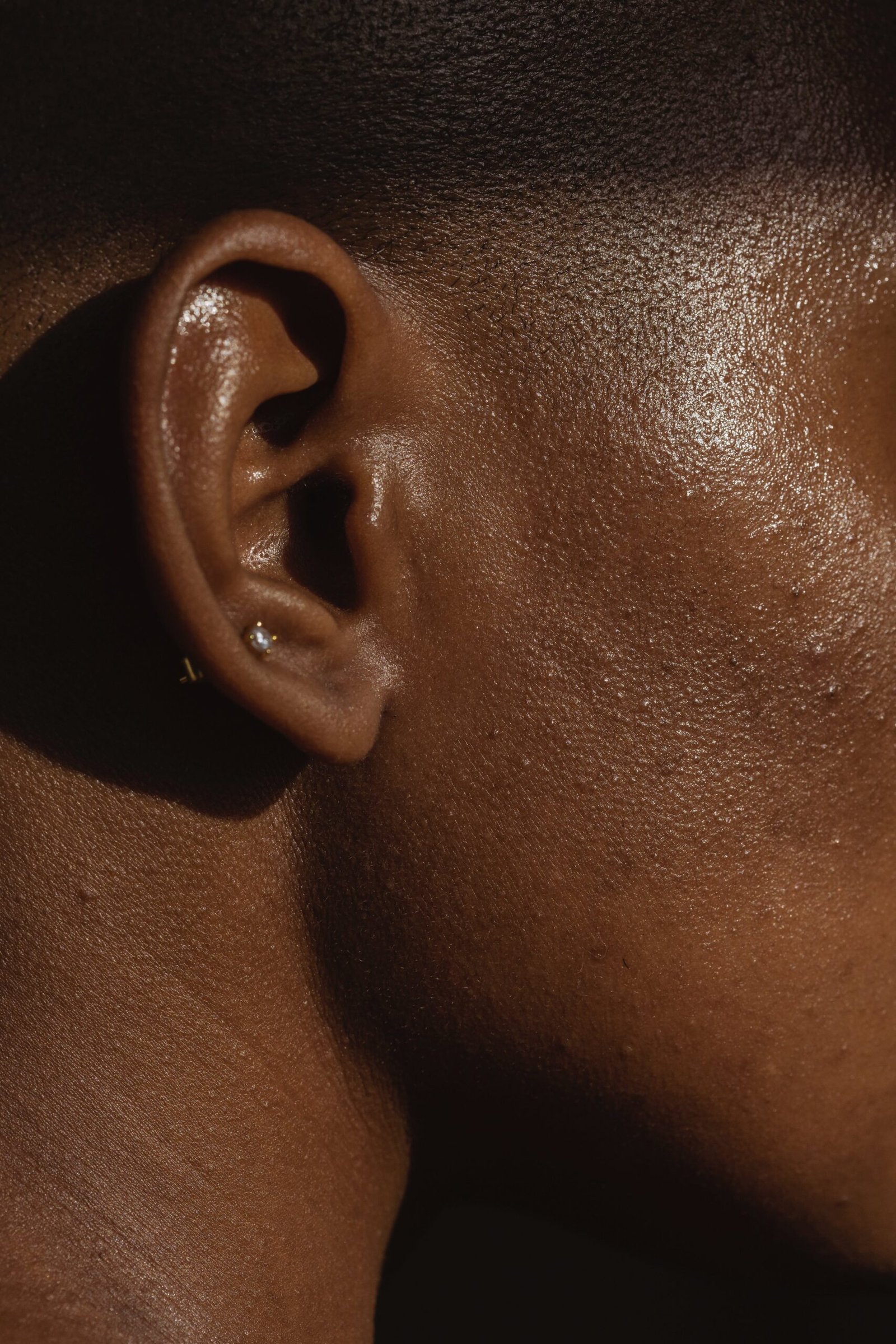
Are you tired of waking up with nagging back of neck pain? Look no further! In this article, you will discover seven simple and effective ways to relieve that troublesome discomfort. Whether it’s caused by poor sleeping posture or stress, these easy techniques will help soothe your pain and restore your well-being. Say goodbye to those mornings filled with stiffness and hello to a refreshed and pain-free start to your day!

Causes of Back of Neck Pain After Waking Up
Waking up with neck pain is a common occurrence for many people. Understanding the causes behind this discomfort is essential in finding relief and preventing future pain. Several factors contribute to back of neck pain after waking up.
Sleeping in an uncomfortable position
One of the main culprits behind back of neck pain is sleeping in an uncomfortable position. When you sleep with your head or neck in an awkward angle, it can strain the muscles in your neck, leading to pain and stiffness upon waking up. To prevent this, it is important to find a sleeping position that properly aligns your head and neck, allowing for a more comfortable sleep.
Poor sleeping posture
Similar to sleeping in an uncomfortable position, poor sleeping posture can also contribute to back of neck pain after waking up. Sleeping without proper support for your head, neck, and spine can lead to misalignment and strain. It is important to practice good sleeping posture by using pillows and mattresses that provide adequate support to maintain the natural curvature of your spine.
Muscle tension
Muscle tension is another common cause of back of neck pain after waking up. Stress, poor posture, and overuse of muscles throughout the day can cause the muscles in your neck and upper back to tighten and become tense. This tension can result in pain and discomfort in the mornings. To relieve muscle tension, it is important to engage in stretching exercises and relaxation techniques, which will be discussed in more detail later.
Stress and anxiety
Lastly, stress and anxiety can contribute to back of neck pain after waking up. When you are stressed or anxious, your body tends to hold tension in your neck and shoulders, leading to muscle strain and discomfort. Managing stress through relaxation techniques can help alleviate neck pain and improve overall well-being.
Preventing Back of Neck Pain
While addressing the causes of back of neck pain is important, preventing it in the first place is an ideal approach. Here are some effective ways to prevent back of neck pain:
Invest in a supportive pillow
Investing in a supportive pillow is crucial for maintaining proper spinal alignment while you sleep. Look for pillows specifically designed to support the neck and maintain a neutral position. Memory foam or cervical pillows are often recommended to provide optimal support and comfort for a good night’s rest.
Practice good sleeping posture
Practicing good sleeping posture is essential to prevent back of neck pain. Maintain a neutral alignment by sleeping on your back or side with a properly supportive pillow. Avoid sleeping on your stomach as it can strain your neck and lead to pain and discomfort upon waking up.
Avoid sleeping on your stomach
Sleeping on your stomach can strain your neck and lead to misalignment. If you are prone to neck pain, it is best to avoid this sleeping position. If you find it difficult to break the habit, try placing a pillow under your pelvis to reduce the strain on your neck.
Use a cervical collar
For individuals with chronic neck pain or those recovering from injuries, using a cervical collar can provide additional support and stability during sleep. Consult with a healthcare professional to determine if a cervical collar is suitable for your specific needs.

Stretching Exercises for Back of Neck Pain Relief
Stretching exercises can be incredibly beneficial in relieving back of neck pain. These exercises help improve flexibility, reduce muscle tension, and alleviate discomfort. Here are some stretching exercises that specifically target the muscles in the back of your neck:
Chin tucks
Chin tucks are an excellent exercise for strengthening the muscles at the back of your neck and improving posture. To perform this exercise, sit up straight with your shoulders relaxed. Slowly bring your chin towards your chest, keeping your gaze forward. Hold this position for a few seconds, then gently release. Repeat this exercise several times throughout the day.
Neck tilts
Neck tilts are another effective stretch for the back of your neck. Start by sitting or standing with your spine straight. Tilt your head to one side, bringing your ear towards your shoulder. Hold this position for a few seconds, then return to the starting position. Repeat on the other side. Perform several repetitions on each side to relieve tension.
Neck rolls
Neck rolls are a simple yet effective exercise for releasing tension in the muscles of your neck. Begin by standing or sitting in a comfortable position. Gently roll your neck in a circular motion, moving from side to side. Take care not to force the movement and avoid any pain or discomfort. Perform this exercise in both clockwise and counterclockwise directions for optimal relief.
Shoulder shrugs
Shoulder shrugs help release tension not only in your neck but also in your shoulders and upper back. Start by standing or sitting with your arms relaxed by your sides. Slowly lift your shoulders up towards your ears, hold for a few seconds, then release them back down. Repeat this motion several times, allowing your muscles to relax with each repetition.
Heat and Cold Therapy for Back of Neck Pain Relief
Heat and cold therapy can offer quick relief for back of neck pain. Both treatments work to reduce inflammation, alleviate muscle tension, and promote relaxation. Here’s how to incorporate heat and cold therapy into your pain relief routine:
Apply a heating pad
Applying a heating pad to the back of your neck can help relax tense muscles and relieve pain. Use a medium heat setting and apply the pad for around 20 minutes. Be sure to use a towel or cloth as a barrier between your skin and the heating pad to avoid burns. If you do not have a heating pad, you can use a warm towel or take a warm shower to achieve similar results.
Use an ice pack
Alternatively, using an ice pack can help reduce inflammation and numb pain in the back of your neck. Wrap the ice pack in a thin cloth or towel and apply it to the affected area for about 15 minutes. Take short breaks between applications to prevent frostbite or skin damage. If you do not have an ice pack, you can also use a bag of frozen vegetables wrapped in a towel.

Massage Techniques for Back of Neck Pain Relief
Massage can be incredibly soothing and beneficial in relieving back of neck pain. With proper techniques, massage can help release muscle tension, improve blood flow, and promote relaxation. Try these massage techniques for effective pain relief:
Self-massage with your hands
You can perform a self-massage using your hands to target the muscles in the back of your neck. Apply gentle pressure with your fingertips or palms and knead the muscles in a circular motion. Focus on any areas of tension and discomfort. Gradually increase the pressure as tolerated, being mindful not to cause any pain. Repeat this self-massage as needed throughout the day.
Foam roller massage
Using a foam roller can be particularly helpful in massaging the muscles in your upper back and neck. Lie down on the floor with the foam roller positioned underneath your upper back. Slowly roll back and forth, allowing the roller to massage the muscles in your neck and upper back. You can adjust the intensity of the massage by shifting your body weight. Perform this exercise for a few minutes to promote pain relief and relaxation.
Over-the-Counter Pain Relief for Back of Neck Pain
Over-the-counter pain relief medications can be effective in managing back of neck pain. These medications provide temporary relief by reducing inflammation and alleviating discomfort. Here are two common types of over-the-counter pain relief options:
Nonsteroidal anti-inflammatory drugs (NSAIDs)
Nonsteroidal anti-inflammatory drugs, commonly known as NSAIDs, can help reduce pain and inflammation in the back of your neck. You can find NSAIDs such as ibuprofen or naproxen sodium at your local pharmacy. Follow the recommended dosage instructions provided by the packaging or consult with a healthcare professional if you have any concerns or pre-existing medical conditions.
Topical creams or ointments
Topical creams or ointments containing active ingredients such as menthol or capsaicin can provide localized relief for back of neck pain. These creams work by numbing the pain receptors or creating a warming sensation that helps ease muscle tension. Apply the cream or ointment directly to the affected area and gently massage it into the skin. Carefully read and follow the instructions provided by the product for optimal results.
Stress and Anxiety Management for Back of Neck Pain Relief
Managing stress and anxiety is crucial in relieving back of neck pain. Chronic stress and anxiety can exacerbate muscle tension and contribute to pain and discomfort. Here are some effective techniques to help manage stress and anxiety, which in turn can alleviate neck pain:
Practice relaxation techniques
Relaxation techniques such as deep breathing, meditation, and progressive muscle relaxation can help calm your mind and reduce tension in your body. Incorporate these techniques into your daily routine, especially before bed, to promote better sleep and relieve neck pain.
Engage in stress-reducing activities
Engaging in stress-reducing activities can have a positive impact on your overall well-being and help reduce back of neck pain. Find activities that you enjoy and make time for them regularly. This can include hobbies, exercise, spending time in nature, or simply spending quality time with loved ones. By prioritizing self-care and stress reduction, you can effectively manage and prevent neck pain caused by stress and anxiety.
Ergonomic Adjustments for Back of Neck Pain Relief
Making ergonomic adjustments to your workspace can significantly reduce back of neck pain caused by poor posture and muscle strain. By creating a comfortable and supportive environment, you can minimize the risk of developing neck pain. Consider the following adjustments:
Evaluate your workspace
Take a closer look at your workspace setup. Ensure that your chair, desk, and computer are properly aligned to promote good posture and reduce strain on your neck and upper back. Make necessary adjustments to the height of your desk and chair to ensure a comfortable and ergonomic setup.
Adjust your computer monitor
Position your computer monitor at eye level to avoid straining your neck by looking down or up for extended periods. Use a stand or adjust the height of your monitor accordingly. Additionally, ensure that the distance between your eyes and the screen is comfortable and not too close or too far away.
Use an ergonomic chair
Investing in an ergonomic chair can greatly improve your posture and reduce back of neck pain. Look for a chair that offers lumbar support and adjustable features to accommodate your individual needs. Sit with your back against the chair and adjust the seat height so that your feet are flat on the floor. This will help maintain proper spinal alignment and alleviate strain on your neck and upper back.
Strengthening Exercises for Back of Neck Pain Relief
In addition to stretching exercises, strengthening exercises can also play a significant role in relieving back of neck pain. These exercises help improve muscle strength and stability, reducing the risk of strain and discomfort. Incorporate the following exercises into your routine for a stronger, pain-free neck:
Neck stretches
Perform gentle neck stretches to strengthen the muscles in the back of your neck. Stand or sit with your spine straight and slowly tilt your head forward, gently pressing your chin towards your chest. Hold this position for a few seconds, then return to the starting position. Repeat this exercise several times, gradually increasing the range of motion as tolerated.
Shoulder and upper back exercises
Strong shoulders and upper back muscles contribute to proper posture and neck alignment. Incorporate exercises such as shoulder shrugs, shoulder blade squeezes, and rows into your workout routine. These exercises help strengthen the muscles surrounding your neck, reducing the strain on your neck and alleviating pain.
When to Seek Medical Attention
While most instances of back of neck pain can be relieved with home remedies and lifestyle changes, there are certain situations where seeking medical attention is necessary. If you experience any of the following, it is recommended to consult with a healthcare professional:
Persistent or worsening pain
If your back of neck pain persists or worsens despite home remedies and lifestyle changes, it is important to seek medical attention. This could indicate an underlying condition or injury that requires further evaluation and treatment.
Accompanied by other symptoms
If your back of neck pain is accompanied by other symptoms such as numbness, weakness, or radiating pain into your arms or legs, it could be a sign of a more serious issue such as a herniated disc or nerve impingement. It is advisable to consult with a healthcare professional for a proper diagnosis and appropriate treatment plan.
In conclusion, back of neck pain after waking up can be caused by various factors, including sleeping in an uncomfortable position, poor sleeping posture, muscle tension, and stress and anxiety. Fortunately, there are several ways to prevent and alleviate this pain, such as investing in a supportive pillow, practicing good sleeping posture, engaging in stretching exercises, using heat and cold therapy, utilizing massage techniques, and incorporating over-the-counter pain relief options. Managing stress and anxiety, making ergonomic adjustments to your workspace, and performing strengthening exercises also contribute to back of neck pain relief. However, if the pain persists or is accompanied by other symptoms, it is advisable to seek medical attention for a proper diagnosis and appropriate treatment. By following these tips and techniques, you can effectively manage back of neck pain and improve your overall well-being.





